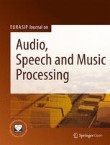Robust dialogue act detection based on partial sentence tree, derivation rule, and spectral clustering algorithm
A novel approach for robust dialogue act detection in a spoken dialogue system is proposed. Shallow representation named partial sentence trees are employed to represent automatic speech recognition outputs. P...
